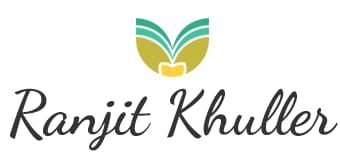NLP Master Practitioner
Who is it for?
Those who have done Practitioner course on NLP and is interested to make career in NLP or further wants to move ahead in self improvement, relationship improvement and personal effectiveness.

Your Responsibility
- Project & market yourself as NLP Master Practitioner in your Circle of Influence and talk about it.
- Program Design right from promotional material, to social marketing to venue finalization.
- Pre Workshop rapport building with participants.
- Identification of need & relevance of individual participants based on questionnaire & telephonic communication. Based on above needs identified apply on individual with relevant group intervention.
- Preparation & submission of report on allocated subject. Our Support:
- Marketing your program through our site and social media platform.
- Based on the participants profile, arrangement of NLP Trainer as Co-facilitator.
- Co-facilitator shall give personal feedback during / post workshop to you & participants (if any).
- Help and single point personal support for preparation & submission of reports.

Duration of Training:
Total 12 month time duration that includes constant learning, testing and implementation of NLP under the supervision of trainers.
Flow of Training:
- Three modules of six days each, with advanced NLP training by certified specialist trainer(s). Conducting two modules (two days each) under the supervision of a certified trainer or demonstrating, coaching & counseling session with real time client.
- An additional support of minimum 15 hours under trainer’s supervision for preparation of reports.Demonstration of the ability to identify the basic skills, techniques patterns and concepts of NLP and to utilize these competently with self and with others.
Course Content
- All practitioner level skills, singly and in combination.
- Design individualized interventions (generative and remedial).
- Ecological change work.
- Shifting easily back and forth between content and form, experience and label.
- Specific Master Practitioner Skills:
- Demonstration of Presentation and Teaching skills:
-
Demonstration of a personal style, and artistry (indicating that the new trainer is integrating skills into his/her own behavior).
-
Demonstration of an understanding of the process of NLP Practitioner training.
-
Time line Therapy and its application.
-
Gestalt Therapy and its application.
Topics to be covered
1.All practitioner level skills, singly and in combination.
- Behavioral integration of the basic presuppositions of NLP. Identification of beliefs of excellence, in life and flexibility to work on limiting self beliefs.
- Rapport building with the help of combination of techniques.
Pacing and Leading (verbal and non verbal). - Calibration -sensory based experience.
- Representational systems (predicates, and accessing cues).
- Meta-Model.
- Milton-Model.
- Elicitation of well-formed, ecological outcomes and structures of present state.
- Metaphor
- Anchoring Techniques and application.
- Dissociation and Association.
- Sub Modalities.
- Meta Programs – filters.
- Accessing and building of resources.
- Re-framing.
- Language patterns focused with words.
- Demonstration of behavioral flexibility with perceptual positioning.
- Part Integration
2. Specific Master Practitioner Skills
- Meta Programs.
- Installation and utilization of strategies.
- Refined use of sub-modalities.
- Deliberate multi-level communication.
- Negotiations.
- Presentation skills.
- Modeling. (done with minimum four models with project report on each)
- Utilization and transformation of beliefs and presuppositions.
3.Demonstration of Presentation and Teaching skills
- Pacing and leading.
- Respect for audience (i.e. at least keeping separate your and others model of the world, and responding to these congruently; considering and responding ecologically to others; conscious and unconscious processes.
- Ability to answer questions, (including discerning the level and intent of questions and generating level-appropriate responses).
- Design of presentation: At the least, setting opening and closing frames, setting outcomes, chunking and sequencing of information and experience, balancing information -giving and occasions for discovery, facilitating generalization of information and skills across context and time.
- Design of exercises: At the least, providing for both overt and covert learning in each exercise, including previously learned material for cumulative learning, specifying outcomes of exercises, providing a task for all involved persons insuring behavioral learning, including a future pace.
- Use of deep and shallow metaphor.
- Utilization of multi-level feedback: ongoing re-evaluation and incorporation of overt and covert information from individuals and group.
- Graceful intervention in groups: at the least maintaining rapport and giving specific sensory grounded feedback, via questions that give direction for appropriate search to facilitate people discovery for them, demonstration, or if necessary, overtly telling them what to do.
- “Tasking”: creating of a task that presupposes that a person behave in a different way that expands his/her model of the world. k. Ability to do demonstrations.
